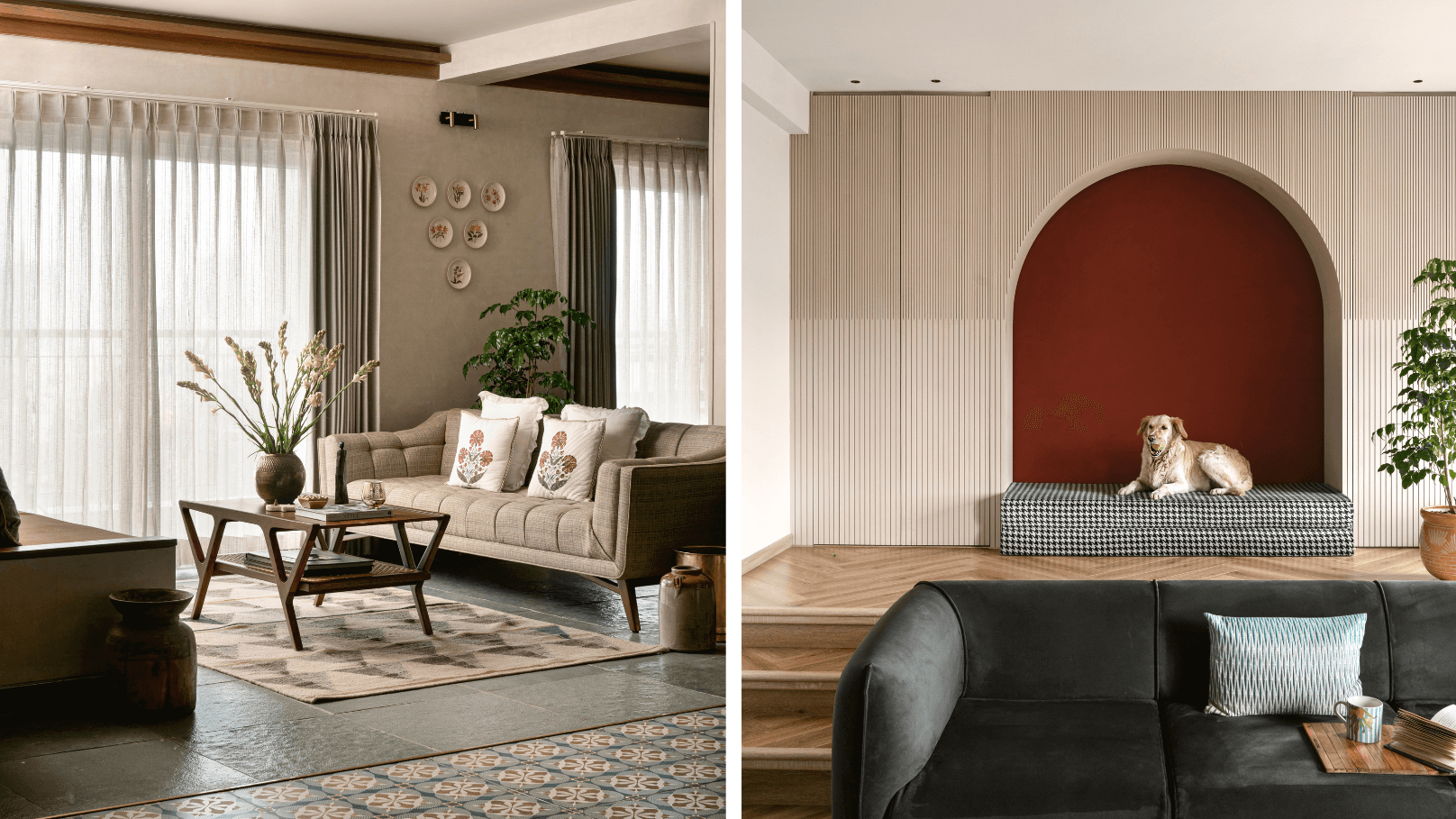For a design practice founded on the concept of crafting responsive spaces personal to how people live, work, play and be, this Bengaluru home came with a heartwarming brief. It was perfect for Lavanya Akarsh, lead designer at Studio Stimulus, and carried all the tenets that go with carving out a new, personal sanctuary—a space that radiates warmth and embraces one with coziness, a palette of rustic, earthy tones creating a serene atmosphere, and functional, uncluttered spaces bathed in natural light. The few personalised additions of their own (that their heritage should reflect in the spaces and that the space becomes a well-rounded home for their furry companions too) only served to make things more interesting. Under Akarsh’s hand, for whom reflecting the end users’ personality is paramount, this 3,000-square-foot Bengaluru home presents a timeless charm that gently nods to the cultural richness of Indonesia, Chennai and Mysore.
To create a sanctuary far from the urban chaos meant embracing a sort of visual quietness. Akarsha achieves this through sober, muted colours, minimalist decor and calming textures that exude peace. The richness that comes from elements drawn from the homeowner’s heritage, although detailed in nature, blend into the subtle elegance of the home, such as the patterned tiles that anchor the design narrative in both the foyer and the formal living room. Pet friendliness also serves as one of the primary guiding principles, including scratch-resistant flooring, easy-to-wash upholstery and open, unhindered spaces for the pets to roam freely.
Modern yet organic, as Akarsh describes it, the spaces flow into one another, organised along a central corridor that functions as the guiding axis. To one end, formal and informal living zones seamlessly transition into balconies that flood the interiors with natural light, leading from shared spaces (such as the entertainment room) to the private quarters of the home. To the other end, the dining area and kitchen create an identity of their own, peppered with well-designed transitional spaces (a semi-foyer, an informal living room) that create a pause in the ordered configuration while catering to a number of functions.
Also read: This child- and pet-friendly Pune home is seamlessly connected to nature
Throughout the space, Akarsh eschews physical boundaries in favour of implied ones to segregate spaces. The structural columns and beams introduce a level of order and rhythm to the design, and they gave Akarsh the opportunity to integrate some statement pieces that visually divided different zones. This is vividly apparent in the striking totem installation placed at the boundary of the semi-foyer-like transitional space and the open dining-and-kitchen zone.
Compact in size, the design of the kitchen presented Akarsh with a unique challenge, who decided on an open layout to maximise the flow of natural light and add a sense of openness. The hues here are inspired from the living spaces to maintain visual cohesion, while still bringing in a distinct identity. A similar approach was adopted for the home theatre—a space designed to serve multiple functions, whether it be to unwind with family or to entertain guests. The room plays with depth to bring in a sense of separation, divided into two distinct areas with a level difference that instantly carves out a cozy seating area.
Also read: 5 pet-friendly restaurants and cafes to visit with your furry companions in Mumbai
Arched motifs recur, be it in the wall niche of the entertainment zone, the small niches with memorabilia in the living room or in the form of the evocative brick cladding appearing in the informal living room. Particularly close to Akarsh’s heart, this brick cladding becomes a visual anchor, positioned to guide the eye towards the open dining and adjacent semi-foyer. The bedrooms follow the tenets of modern minimalism as well, while tactile surfaces, earthy tones and a dreamy interaction of sunlight with natural materials aims to create an immersive experience that espouses tranquility.
For someone who designs contemporary spaces with transitional influences, Akarsh—who straddles and layers modern functionality, inspiration from cultural roots and an earthy aesthetic here—thoroughly enjoyed creating this deeply personal home. As Akarsh puts it, the design’s charm lies in its ability to weave a story of harmony between tradition and modernity.

